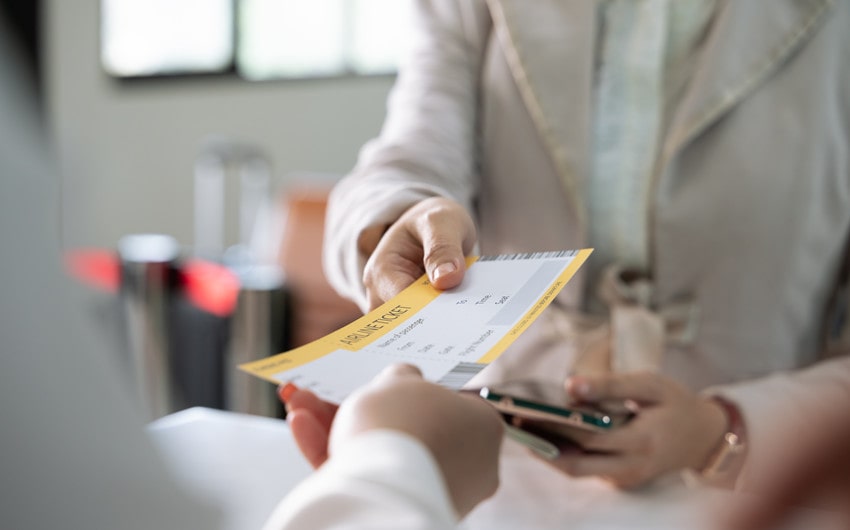What Does an SSSS Boarding Pass Mean for Travelers?
Traveling is exciting, but some things can catch you off guard—like seeing “SSSS” on your boarding pass. If you’ve noticed this mysterious code, you’re probably wondering what it means. An SSSS boarding pass indicates that you’ve been selected for additional security screening at the airport. It might feel unexpected, but it’s a standard part of airline travel for certain passengers.
Understanding what happens during this process and how to prepare will make your journey smoother, even with this extra step. Let’s walk through why it happens and what you can do to stay calm and get through it easily.
What Does SSSS on a Boarding Pass Mean?
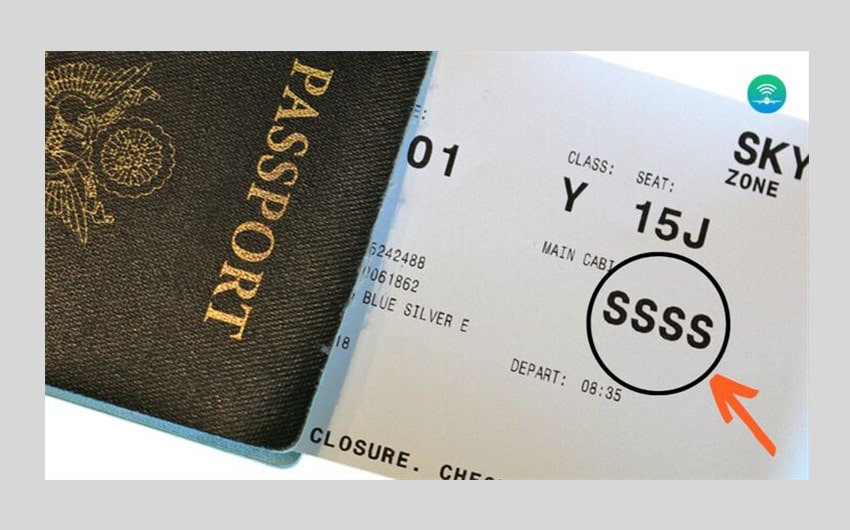
Image source: Pinterest
The “SSSS” on a boarding pass stands for Secondary Security Screening Selection. This code indicates that a traveler has been randomly or deliberately selected for extra security checks before boarding. It typically applies to international flights, travelers with last-minute bookings, or individuals flagged by the security system.
If you see “SSSS” on your boarding pass, expect additional steps like bag checks, pat-downs, and thorough questioning by TSA agents. While it may add some time to your journey, these procedures are standard and help ensure safer travel for everyone.
Why Do You Get an SSSS Boarding Pass?
Receiving an SSSS boarding pass can feel frustrating, especially when you’re caught off guard, but understanding the reasons behind it can ease some of the stress. This selection isn’t always personal—several factors can trigger it, both randomly and intentionally, as part of airport security measures. Here are some of the most common reasons why you might receive an SSSS boarding pass:
1. Random Selection by TSA
One of the most common reasons for receiving an SSSS boarding pass is random selection. TSA uses a system designed to unpredictably select passengers for additional screening. This randomness ensures that security checks remain thorough and difficult to predict for anyone intending to bypass security.
Even frequent flyers or passengers with a history of smooth travel may occasionally be selected. The key is not to take it personally—it’s just part of keeping airport security effective.
2. International Travel Routes
Flights involving international travel, especially to or from certain regions, are more likely to trigger SSSS selection. Countries on government watchlists or with heightened security risks tend to receive closer scrutiny from TSA and other security agencies.
If your travel plans include layovers in such areas, you may receive an SSSS boarding pass. This is especially true for routes that are commonly used for illegal activities or heightened geopolitical tensions. The goal is to ensure that travelers on sensitive routes are properly vetted.
3. Booking Travel at the Last Minute
Booking a flight at the last minute or purchasing a one-way ticket can sometimes raise red flags. From a security perspective, spontaneous travel can signal irregular behavior, especially if it involves international destinations.
Security systems may flag this as suspicious, even if your reasons for booking last minute are perfectly innocent. Whenever possible, booking flights in advance or opting for round-trip tickets can reduce your chances of getting the SSSS code.
4. Mismatched or Incomplete Traveler Information
Minor discrepancies in your travel documents, such as spelling errors or name mismatches between your ticket and passport, can result in additional screening. Even a small typo can cause the system to flag your boarding pass for closer examination.
Similarly, inconsistencies in your personal data or incomplete forms may trigger extra security procedures. Double-checking your booking information to ensure it matches your identification documents is a simple way to avoid this issue.
5. Unusual Travel Patterns or High Frequency of Travel
Travelers with irregular travel routes or frequent international flights might be flagged for closer inspection. For example, if you travel to multiple countries within a short period, especially in regions with heightened security concerns, the system may select you for additional screening.
High-frequency travelers—such as businesspeople or diplomats—might also receive an SSSS boarding pass occasionally, as the system monitors patterns to detect potential risks. This screening helps maintain security even for those with frequent travel histories.
6. Security Alerts or Watchlists
If your name matches or resembles a name on a government watchlist, you might receive an SSSS boarding pass. This is an added precaution to ensure that individuals flagged by the system are properly screened. While false positives are common, the security process prioritizes caution over convenience.
Even a slight similarity in name or profile can cause the system to select you. For travelers who encounter this issue frequently, applying for a redress number through DHS TRIP can help prevent it from happening again.
7. Issues with Travel Documents or Visa Status
Problems with your travel documents—such as an expired visa, unresolved travel restrictions, or irregularities in your passport—can trigger SSSS screening. If there is any concern about the validity or status of your documents, security agencies may require additional checks before allowing you to board.
Travelers with pending legal or immigration issues are also more likely to receive the SSSS code. Ensuring your documents are up to date and in order before travel can help avoid this situation.
What Happens During the SSSS Process?
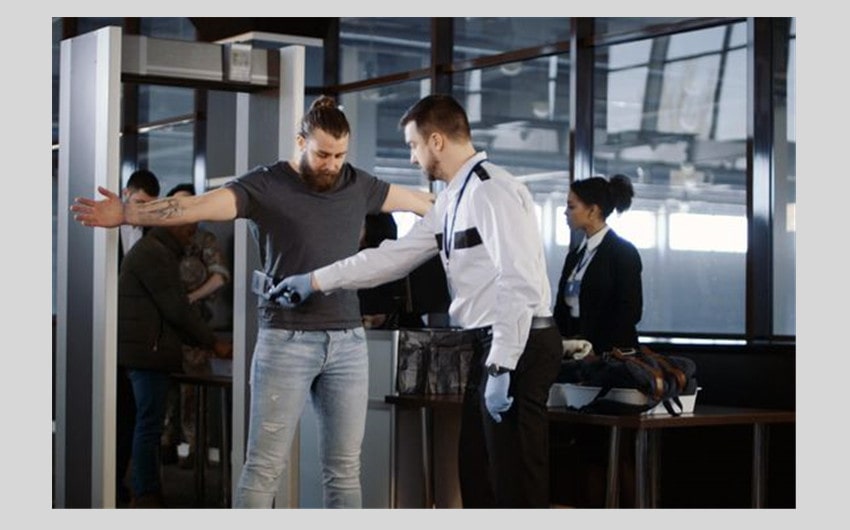
Image source: Pinterest
If you find the SSSS boarding pass printed on your ticket, it means you’ll undergo Secondary Security Screening Selection at the airport. This extra layer of screening can feel intimidating if you’re not prepared, but knowing what to expect will make the process smoother. Here’s a detailed look at what happens during the SSSS process, so you’ll know exactly how to handle it.
1. TSA Agents Identify the SSSS Code
When you hand over your boarding pass at the security checkpoint, TSA agents will immediately recognize the SSSS code. This alerts them to guide you to a separate area for additional screening. It’s important to remain calm and cooperative, as the agents are simply following protocol. Expect to receive instructions on where to go and how the process will proceed.
2. Additional Identification Verification
Before the screening begins, TSA agents will carefully check your identification documents. They may inspect your passport, driver’s license, or other travel documents more thoroughly than usual. This ensures that all your personal information is accurate and matches your ticket. They might ask questions about your travel plans, such as your destination, purpose of travel, or the reason for your itinerary. Being polite and providing clear answers will help move the process along.
3. Thorough Inspection of Luggage and Personal Items
One key part of the SSSS process is a detailed inspection of your carry-on luggage and any personal items. TSA agents will ask you to remove electronic devices, liquids, shoes, and other items from your bags for closer examination. They may swab items, looking for traces of explosives or other restricted substances. Be prepared to open all your bags and remove any packed electronics, such as laptops or tablets, for scanning.
4. Electronic Device Screening
If you are carrying devices like smartphones, tablets, or laptops, TSA agents may take extra time to inspect them. They could ask you to turn the devices on to confirm they are functioning normally. In some cases, they might run additional tests, such as swabbing the device or performing more detailed scans. If you’re traveling with several electronics, organizing them for easy access will make this process faster.
5. Full-Body Scans or Pat-Downs
In addition to standard metal detectors, you may be required to go through a full-body scanner. These machines check for any hidden objects under clothing that might not trigger a metal detector. If the scanner picks up anything unusual, or if you prefer not to go through it, you can opt for a pat-down. A TSA agent of the same gender will perform a thorough but respectful pat-down to ensure you’re not carrying anything prohibited.
6. Questioning by TSA Agents
During the screening, TSA agents may ask you additional questions to verify your identity and travel plans. Questions can range from details about your itinerary to the purpose of your visit. It’s important to stay calm, answer honestly, and avoid being defensive. The goal is to gather basic information that ensures the security of the flight and other passengers. If you are traveling to multiple destinations or internationally, be ready to explain your travel route in detail.
7. Extra Scanning of Checked Baggage (if Required)
In some cases, TSA might also inspect your checked luggage if they deem it necessary. This step can take additional time, especially if your luggage contains electronics, liquids, or other items that need to be inspected more closely. While this process is not always required, it’s good to be aware of the possibility, especially for international flights with complex baggage requirements.
8. Security Stamp or Mark on Your Boarding Pass
Once the screening process is complete, TSA agents will usually stamp or mark your boarding pass to indicate that you’ve passed the additional security screening. This mark ensures that other airport personnel are aware that your screening is complete, allowing you to board your flight without further checks. Make sure to keep your boarding pass safe after it’s marked, as losing it could cause delays.
9. Allow Extra Time for Boarding
The entire SSSS process can take additional time, depending on how busy the airport is and how many items need to be inspected. It’s essential to arrive at the airport early—preferably two to three hours before your flight—so you have enough time to complete the screening without rushing. If you’re traveling internationally, leaving even more time is advisable.
How to Prepare for SSSS Screening
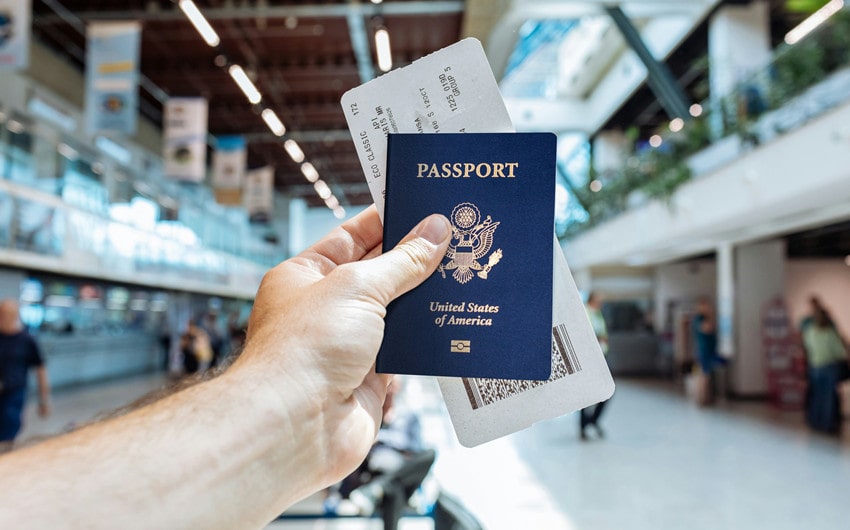
Finding SSSS on your boarding pass can feel stressful, especially if you’re unfamiliar with the process. However, a little preparation can make the experience smoother and faster. Whether you travel often or this is your first time encountering the Secondary Security Screening Selection, being organized and knowing what to expect will help you navigate it with ease. Here are some practical ways to prepare for SSSS screening and reduce potential delays.
1. Arrive at the Airport Early
Since the SSSS process involves extra security steps, arriving early is essential to avoid missing your flight. Plan to arrive at least two to three hours before a domestic flight and three to four hours for international flights. This allows you enough time for screening, check-in, and boarding without feeling rushed. Keep in mind that TSA lines can vary in length, especially during peak travel seasons, so the earlier you arrive, the less stressful the process will be.
2. Organize Your Documents and Belongings
Having your travel documents easily accessible will speed up the screening process. Make sure your passport, ID, boarding pass, and visa (if needed) are ready to present at a moment’s notice. You may also need to explain your travel itinerary, so keep any relevant hotel reservations or tickets easily accessible. In addition, pack your carry-on bag neatly to make it easier for TSA agents to inspect. Place electronics and liquids at the top so you can remove them quickly for inspection.
3. Minimize Items in Your Carry-On Bag
Since the SSSS screening includes thorough luggage checks, bringing fewer items in your carry-on can make the process faster. Stick to essentials and avoid packing unnecessary electronics, liquids, or sharp objects. If possible, keep valuables and electronics in one compartment to make it easier to pull them out during inspection. Avoid overpacking your bags, as this can slow down TSA’s inspection and increase your wait time.
4. Wear Comfortable, Easy-to-Remove Clothing
Since SSSS screening may require additional body scans or pat-downs, it’s a good idea to wear clothes that are easy to remove or adjust. Avoid wearing belts, jewelry, or shoes with complicated laces, as these items will need to be removed during the screening. Slip-on shoes and minimal accessories can help speed things up. Also, be prepared for TSA agents to request you remove jackets, sweaters, or other layers if necessary.
5. Be Ready to Power On Electronics
If you’re traveling with laptops, tablets, or other electronic devices, be prepared to power them on if TSA agents ask. This is done to verify that the devices are functioning and not tampered with. Make sure your devices are fully charged to avoid complications during inspection. If a device won’t power on, you may face delays or additional questioning.
6. Stay Calm and Cooperative
The SSSS screening is a standard procedure, and TSA agents are following security protocols. Remaining calm, polite, and cooperative will make the process go more smoothly. Avoid arguing with agents or showing frustration—it will only slow things down. Answer questions honestly and clearly, especially if asked about your travel plans. Cooperation will help build rapport with the agents and keep the process efficient.
7. Apply for TSA PreCheck or Global Entry (If Possible)
While TSA PreCheck or Global Entry may not exempt you from SSSS screening, it can still offer benefits for future travel. These programs allow passengers to speed through general security lines, even if they occasionally encounter the SSSS code. Having a redress number through DHS TRIP may also help if you’ve been selected for SSSS screening multiple times, as it can reduce the chances of being flagged in the future.
8. Keep a Positive Attitude
While being selected for SSSS screening may seem frustrating, remember that it is a routine procedure designed for safety. Staying patient and maintaining a positive attitude can help reduce stress during the process. Try to view it as part of your travel experience and focus on what you can control—such as being prepared and arriving on time. A good attitude goes a long way, and it can also make the agents’ jobs easier.
Can You Avoid Getting an SSSS Boarding Pass?
While there is no guaranteed way to avoid receiving an SSSS boarding pass, understanding the factors that trigger it can help reduce the chances of being selected. The TSA’s selection process is often random or based on algorithms that consider specific travel patterns, making it impossible to fully control. However, by following these practical tips, you can minimize the likelihood of being flagged for additional security screening:
1. Book Your Flights in Advance
Last-minute flight bookings or one-way tickets are more likely to trigger the SSSS code since they are seen as irregular travel patterns. Whenever possible, book your flights early and opt for round-trip tickets to avoid drawing unnecessary attention. Planning your travel in advance reduces the chance that security systems will flag your itinerary.
2. Consistent Personal Information
Make sure the name on your boarding pass matches your ID exactly. Even minor discrepancies, such as using a nickname instead of your full name, can trigger additional screening. Consistency across your airline ticket, passport, and government-issued ID ensures that you won’t be flagged for mismatched information. Double-check your travel documents when booking to avoid unnecessary complications.
3. Enroll in TSA PreCheck or Global Entry
Joining programs like TSA PreCheck or Global Entry can speed up the regular security process and may lower the odds of receiving an SSSS boarding pass. While these programs don’t completely exempt you from SSSS screening, passengers with TSA PreCheck are less likely to be flagged because their background is already vetted.
4. Avoid Changing Your Travel Itinerary Often
Frequent last-minute changes to your flight schedule or route can raise red flags within airline security systems. If possible, stick to your planned itinerary and avoid sudden modifications. Abrupt changes, especially on international flights, might increase the chance of being selected for additional screening.
5. Use a Redress Number (If Applicable)
If you have experienced repeated instances of receiving the SSSS code, applying for a redress number through DHS TRIP (Traveler Redress Inquiry Program) can help. A redress number identifies you as a known traveler who has previously been flagged, reducing the likelihood of future selections. Once approved, you can enter the redress number when booking flights, helping you bypass unnecessary screenings.
6. Travel During Non-Peak Times
Airport security tends to be more vigilant during peak travel periods such as holidays, weekends, or during high-risk travel seasons. Flying during less busy times may reduce your chances of being randomly selected for additional screening. Off-peak travel also ensures shorter lines, giving you more time if extra screening is required.
7. Limit Travel to Sensitive Destinations
Certain countries are flagged for increased security checks, which can increase the odds of receiving the SSSS code. If you frequently fly to or from high-risk regions, consider planning alternate routes where possible. This might reduce your exposure to additional screening, especially for non-essential travel to flagged countries.
Is There a Way to Get Off the SSSS List?
If you find yourself receiving the SSSS boarding pass frequently, you might wonder if there’s a way to avoid future screenings. While the SSSS selection is not necessarily a formal “list” that you are placed on, frequent occurrences may suggest you’ve been flagged in the system. The good news is that there are steps you can take to reduce the chances of being flagged repeatedly:
1. Apply for a Redress Number through DHS TRIP
A redress number is a unique identifier issued by the Department of Homeland Security’s Traveler Redress Inquiry Program (DHS TRIP). This program is designed for travelers who experience repeated security inconveniences, such as receiving the SSSS code multiple times. Once your application is approved, the redress number links your profile to a DHS review, helping prevent repeated selections. You can provide the redress number when booking flights to reduce the likelihood of extra screening.
2. Ensure Consistency in Travel Documents
Sometimes, repeated SSSS selections occur due to inconsistencies in personal data. Ensure that your name, date of birth, and other personal information match exactly across your passport, ticket, and frequent flyer accounts. This will prevent errors that may cause the security system to select you for additional screening.
3. Monitor Your Travel Patterns
If you frequently book flights at the last minute, make one-way bookings, or travel to multiple countries within short periods, the system might flag you as an outlier. While it may not always be possible to change your travel habits, opting for round-trip flights and planning ahead when possible can reduce future SSSS selections.
4. Contact Your Airline for Assistance
If you’ve experienced multiple instances of receiving the SSSS code, contacting your airline may provide some clarity. Airlines have access to security data and may be able to offer advice or confirm if a redress number might help. While they can’t remove the code themselves, they can assist with ensuring that your travel information is entered correctly to avoid future issues.
5. Limit Travel to High-Risk Destinations
If you frequently fly to destinations under heightened security scrutiny, your travel patterns might increase the chances of receiving the SSSS code. While some destinations cannot be avoided, consider planning alternate routes or limiting non-essential travel to high-risk countries. This can reduce the frequency of additional screenings.
6. Be Mindful of Your Travel Behavior
Security algorithms sometimes flag behavior that seems unusual, even if innocent. For example, frequent flight changes, mismatched information, or traveling without luggage could trigger the SSSS code. Being mindful of these behaviors and maintaining consistent travel routines can help lower your chances of being flagged repeatedly.
What to Do If You See SSSS on Your Boarding Pass?
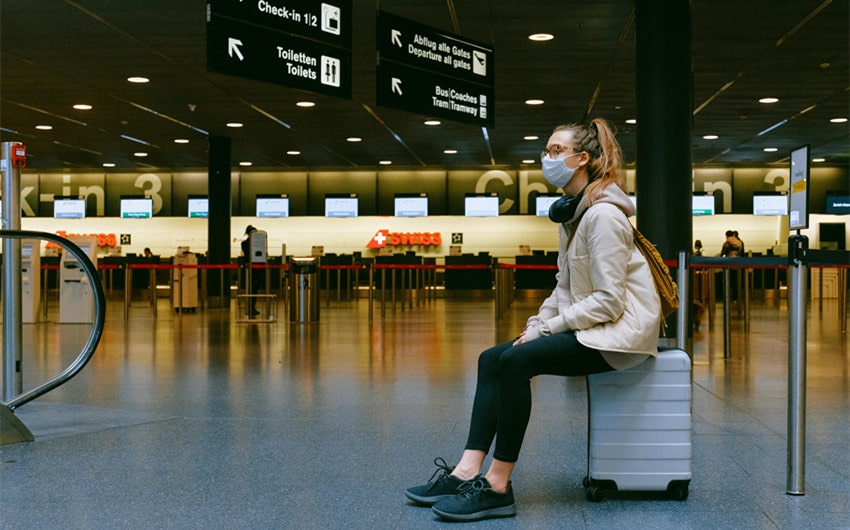
Discovering the SSSS code on your boarding pass can catch you off guard, especially if you’re not familiar with what it means. However, knowing how to handle the situation can make the process much smoother. Here’s a step-by-step guide on what to do if you encounter the SSSS boarding pass so you can manage the additional screening efficiently and avoid unnecessary delays.
1. Stay Calm and Plan for Extra Screening Time
- Don’t panic—the SSSS code is a common occurrence, and many travelers experience it.
- Allow extra time for the screening process by arriving at the airport earlier than usual. For domestic flights, try to arrive at least two hours in advance, and for international travel, aim for three to four hours. This ensures you have enough time to go through the additional security steps without feeling rushed.
2. Prepare Your Travel Documents
- TSA agents will carefully check your passport, ID, and boarding pass during the screening. Make sure all your documents are easily accessible and match exactly to avoid further complications.
- If you’re traveling internationally, keep your visa or travel permits handy, as you may need to present them multiple times during the process. Double-check that your personal details—such as your name and date of birth—match across all travel documents to avoid triggering further screening.
3. Be Ready for Detailed Bag and Electronics Checks
- Expect TSA agents to inspect your carry-on luggage and personal items thoroughly. To save time, organize your belongings before arriving at the security checkpoint. Place electronics, liquids, and toiletries at the top of your bag so they’re easy to remove for inspection.
- Make sure any electronics are charged and functional, as agents might ask you to power them on to confirm they are legitimate devices. If possible, minimize the number of items in your carry-on bag to make the inspection faster.
4. Cooperate Fully with TSA Agents
- Listen carefully to TSA agents and follow their instructions without resistance. They may ask you questions about your travel plans or destination, and answering clearly and politely will help the process move along quickly.
- If asked to undergo a pat-down or additional screening, remain cooperative. TSA agents will perform these procedures respectfully, but they are required to follow strict protocols to ensure the safety of all travelers. Your patience will make the experience smoother.
5. Expect Extra Security Measures
- You will likely go through a full-body scanner or receive a detailed pat-down as part of the SSSS screening.
- TSA agents may use swabs on your luggage or clothing to detect any traces of explosives or prohibited substances. This is a standard part of the screening process, so don’t be alarmed if it happens.
- If there are any irregularities detected during the screening, agents may ask follow-up questions or inspect your items further. These extra steps are routine and should not be a cause for concern.
6. Request Assistance if You Have Concerns or Issues
- If you’re unsure about any part of the SSSS process, don’t hesitate to ask for clarification. TSA agents are trained to help passengers through the process.
- If you feel uncomfortable with a particular procedure—such as a pat-down—you can request a same-gender TSA agent to conduct the screening or ask for it to be done in a private area.
7. Keep Your Boarding Pass After It’s Stamped
- Once the SSSS screening is complete, TSA agents will usually mark or stamp your boarding pass to indicate that you’ve passed the additional security checks. Keep this stamped boarding pass handy, as it will be needed at the gate.
- Ensure that you don’t lose your boarding pass, as it confirms you’ve completed the security process. If lost, you may have to repeat parts of the screening.
8. Inform Your Airline if You Experience Delays
- If the SSSS screening takes longer than expected and you’re concerned about missing your flight, notify your airline immediately. Airline staff can assist you by informing the gate agents of your situation or rebooking you on a later flight if necessary.
- It’s a good idea to keep the airline’s contact information saved in your phone so you can reach them quickly in case of delays.
9. Remain Positive Throughout the Process
- The SSSS screening is part of airport security designed to ensure everyone’s safety. Staying calm, polite, and positive will help reduce stress and make the experience easier.
- Treat the extra screening as a routine part of travel, and try not to let it ruin your experience. The screening is temporary, and once completed, you can relax and enjoy your journey.
If you see SSSS on your boarding pass, knowing what to expect and how to handle the process will save you time and frustration. Arrive early, stay organized, and cooperate with TSA agents to get through the screening smoothly. While receiving an SSSS boarding pass may feel inconvenient, it’s just a part of travel security. With the right preparation and mindset, you’ll be able to manage it confidently and get to your destination without unnecessary delays.

